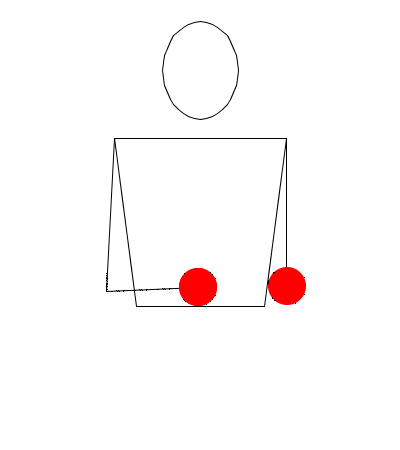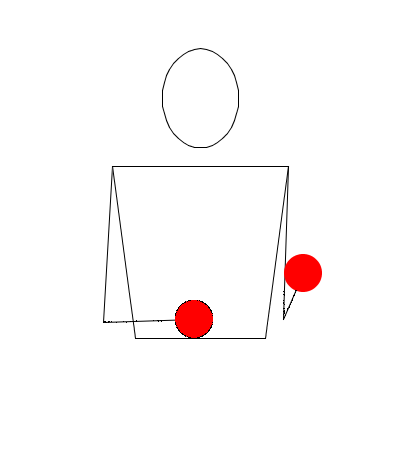Arrow of Asai
Other Tutorials:
- Siteswap: [35]1231
- Difficulty (1-10): 6
- Prerequisites: Shuffle, Penman's Box (optional)
Daniel Marden
(last trick)
Other demonstration
(video clip)

The Arrow of Asai is a three
ball juggling pattern established by
Daniel Marden,
who specializes in multiplex juggling. It combines a stacked multiplex with
rapid passes, creating a surprisingly fast-paced pattern. The speed of the
trick, along with its almost paradoxical high throws, gives the Arrow of
Asai an unusual juggling aesthetic.
To learn the Arrow of Asai, start with two balls in your
dominant hand and one ball in your non-dominant. Make a stacked multiplex
throw from your dominant hand such that the balls are about 12 inches (30
cm) apart. As the top ball reaches its peak, make a slam throw (a pass
directed diagonally downward) from your non-dominant hand to your dominant
hand. The slam should be caught by your dominant hand at a height slightly
greater than the peak of the lower multiplexed ball. After making the slam,
your non-dominant hand should then claw catch the bottom multiplexed ball
(in a manner similar to what would be done in the Shuffle pattern). After
catching the slammed ball, your dominant hand will then be pulled between
the upper and lower multiplexed balls such that it crosses over your
non-dominant hand. The upper multiplexed ball will then be caught
under-the-arm by your non-dominant hand.
As shown, practice this on both sides. In the next step we
will add in the other vertical throw and the circular arm flourish. Start by
doing the same throws described in step one and then, as the upper
multiplexed ball descends toward your non-dominant hand (which should at
this point still be underneath your dominant hand), make a vertical throw
from your non-dominant hand along the outside of the descending ball,
clearing space for your non-dominant hand to catch the ball. As that
vertical throw is being made, your dominant hand is going to swing around
and pass between the vertical ball just thrown and the caught multiplexed
ball. The vertical ball will then be caught by your dominant hand.
Practice this on both sides. For the final step, we are going
to add the horizontal pass. Start by repeating the previous step and then,
as your dominant hand finishes its flourish, you are going to make a
close-range pass from your dominant hand to your non-dominant hand, which
should already be holding a ball. This will clear space for your dominant
hand to catch the vertical ball thrown previously by your non-dominant hand.
Practice this single cycle of the pattern on each side. To
run the full Arrow of Asai, simply make another multiplex throw before
catching the vertical ball. The timing between the multiplex throw and the
vertical ball catch is a grey area, since it is possible to make the
multiplex shortly after the other ball is caught, although this
breaks up the pattern and renders it non-continuous. For the greatest
effect, it is probably best that you make the multiplex either before or at
the same time as the vertical ball is caught. However, when first learning
the pattern it is best that you not worry about the timing until you have a
good grasp on the rest of the trick.
